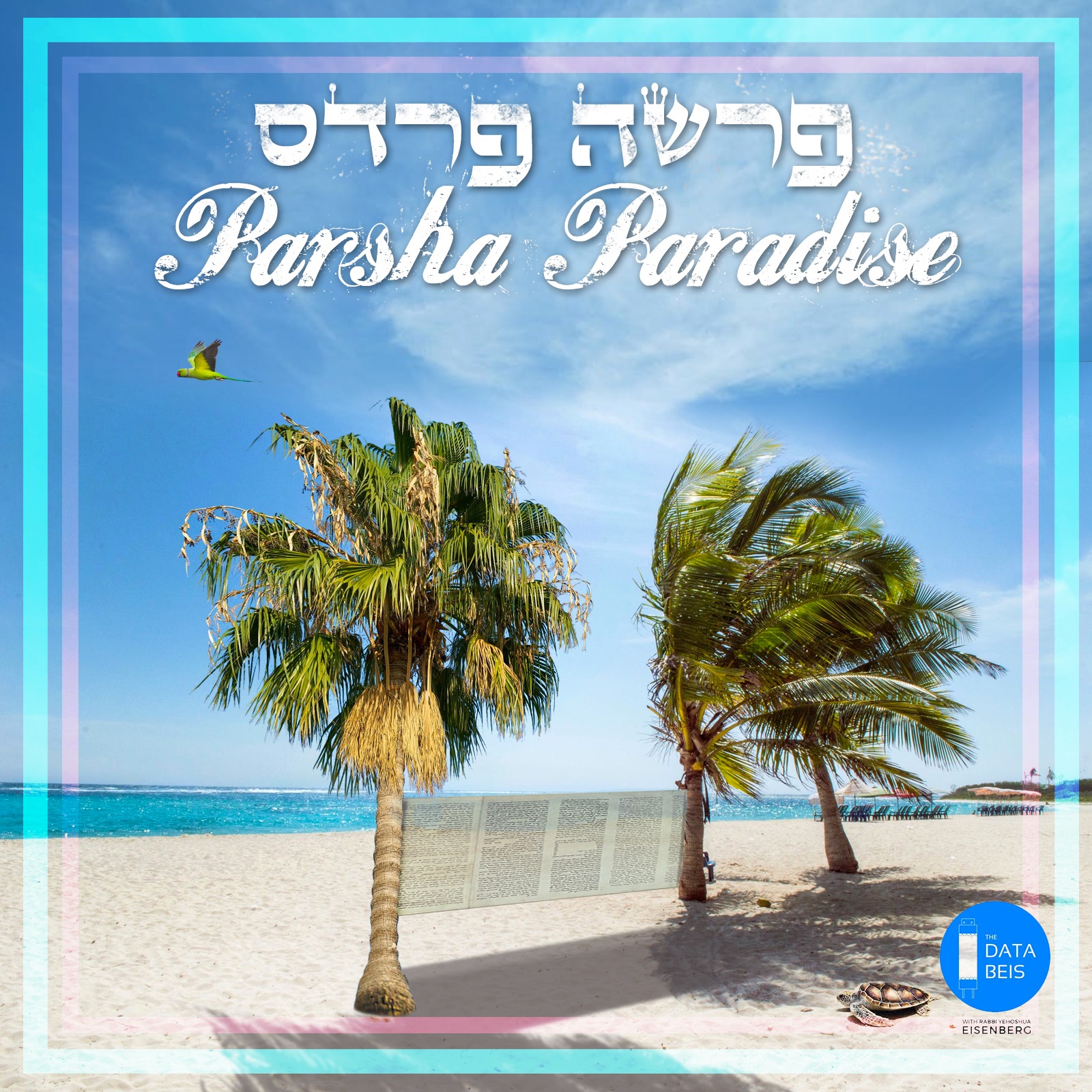This D’var Torah should be a Zechus L’Ilui Nishmas my sister, Kayla Rus Bas Bunim Tuvia A”H, my maternal grandfather Dovid Tzvi Ben Yosef Yochanan A”H, my maternal grandfather Dovid Tzvi Ben Yosef Yochanan A”H, my paternal grandfather Moshe Ben Yosef A”H, my paternal grandmother Channah Freidel Bas Avraham A”H, my uncle Reuven Nachum Ben Moshe & my great aunt Rivkah Sorah Bas Zev Yehuda HaKohein,
It should also be in Zechus L’Refuah Shileimah for:
-My father Bunim Tuvia Ben Channa Freidel
-My grandmother Shulamis Bas Etta
-MY BROTHER: MENACHEM MENDEL SHLOMO BEN CHAYA ROCHEL
-HaRav Shlomo Ben Shayna Zelda
-Mordechai Shlomo Ben Sarah Tili
-Noam Shmuel Ben Simcha
_R’ Simcha Yitzchak Ben Mirela Liyatka
-Chaya Rochel Ettel Bas Shulamis
-And all of the Cholei Yisrael, especially those suffering from COVID-19 and the Meiron tragedy.
-It should also be a Z’chus for an Aliyah of the holy Neshamos of HaRav HaGa’on V’Sar HaTorah Shmaryahu Yosef Chaim Ben HaRav Yaakov Yisrael Kanievsky A”H, Dovid Avraham Ben Chiya Kehas—R’ Dovid Winiarz ZT”L, Miriam Liba Bas Aharon—Rebbetzin Weiss A”H, as well as the Neshamos of those whose lives were taken by terrorists (Hashem Yikom Damam), COVID-19, and the Meiron tragedy.
-It should also be a Z’chus for success for Tzaha”l as well as the rest of Am Yisrael, in Eretz Yisrael and in the Galus.
בס”ד
The rest of my audio content can be found here:
https://jewishpodcasts.fm/thedatabeis
Parsha Paradise/פרשה פרדס – Devarim: Where Did Moshe Deliver His Final Speech? 🏜🏞🌊🍚🏟🪙 (Between the ר and ס of Pardeis!)
Audio:
https://jewishpodcasts.fm/thedatabeis/40286
Devarim sets the stage for Moshe Rabbeinu’s final speech and does so in a way that is so precise and specific, that it’s not at all clear where the speech to took place. How is that possible? Where did the speech really take place?
The first Pasuk in the Parsha seems to suggest several places where Moshe spoke.
אֵ֣לֶּה הַדְּבָרִ֗ים אֲשֶׁ֨ר דִּבֶּ֤ר משֶׁה֙ אֶל־כָּל־יִשְׂרָאֵ֔ל בְּעֵ֖בֶר הַיַּרְדֵּ֑ן בַּמִּדְבָּ֡ר בָּֽעֲרָבָה֩ מ֨וֹל ס֜וּף בֵּֽין־פָּארָ֧ן וּבֵֽין־תֹּ֛פֶל וְלָבָ֥ן וַֽחֲצֵרֹ֖ת וְדִ֥י זָהָֽב
What does the Torah mean? Where are these locations which we’ve never heard of in the Torah before?
P’shat:
Several Rishonim, among them, Bechor Shor, Netziv, Rashbam, and Ibn Ezra understood that, indeed, the Torah must have been listing names of locations. Granted, many of these names have not been mentioned in any of the Torah’s prior records, but Ibn Ezra points out that it is not at all uncommon for one location to have mire than one name.
But, did Moshe deliver his speech in more than one location? Bechor Shor and Netziv argue that in a certain sense, yes. Devarim is where Moshe reviews all of the speeches and Torah that he taught over the course of forty years the B’nei Yisrael traveled in the wilderness. Thus, “these are the words” that Moshe communicated to them at all of these places.
We will combine a Remez with both Drash and with Sod today.
Remez/Drash:
Rashi quotes the Sifrei which famously implies that the reason that we haven’t heard of some of these locations before is that in fact, they aren’t all really locations. They are buzzwords hinting to various unfortunate events, sins for which Moshe rebuked the B’nei Yisrael, all B’Derech Remez. Out of his Kavod for them, the rebuked was veiled [Sifrei Devarim 1:1; Onkelos and Targum Yonasan].
“Bamidbar” refers to their complaint that they’d die in the desert [Shemos 16:3].
“BaAravah” refers to their worship of Ba’al Pe’or which took place at Arvos Mo’av [Bamidbar 25:1-9].
“Mol Suf” refers to their complaint at the Yam Suf [Shemos 14:11].
“Paran” alludes to the Cheit HaMiraglim who traveled through Midbar Paran.
“Tofel V’Lavan” refers to the foolish complaints against the Mann [Bamidbar 21:5].
“Chateiros” alludes to Korach’s rebellion or Miriam’s Lashon HaRa which took place there.
“Di-Zahav,” literally, “enough gold,” alludes to the Cheit HaEigel HaZahav.
Remez/Sod:
Megaleh Amukos [202:1, see also 246:1 on based Zohar (I, Vayeitzei 28:10)] explains that Moshe was taught the Torah three times, at Sinai, the Ohel Mo’eid, and at Arvos Mo’av. He suggests that these three times correspond to none other than P’shat, Drash, and Remez, indeed, the first three levels of Pardeis (פרד”ס). Thus, Devarim corresponds to Remez, as indeed, Moshe rebuked the B’nei Yisrael through Remez. In this vein, the words “Eileh HaDevarim,” in Gematria, equals “Remazim!”
Megaleh Amukos explains further that Moshe had hoped to enter Eretz Yisrael to reach the final level of Sod or the Razei Torah (secrets of Torah), however, Hashem reassured him that he had already reached that level (and would still not be granted entry).
That Moshe reached that level might be alluded to in another Remez the Megaleh Amukos cites from the Zohar, that the secrets of Torah are referred to as “Be’er,” a well. Zohar teaches that when Yaakov left “Be’er Sheva,” he took the Razei Torah or Sod of Torah with him. Thus, when the Torah relates that Moshe elaborated on the Torah in our Parsha, “Bei’er Es HaTorah HaZos” [Devarim 1:5], he did so with secrets of Torah as well.
Thus, we could say that beyond the mysterious locations, Moshe Rabbeinu’s speech took place right in the middle of the Pardeis.
We should be Zocheh to access all layers and levels of Torah, to prepare ourselves to receive words that will assist our growth, and Hashem should grant us access to the Toras Eretz Yisrael with the coming of Moshiach, Bimheirah BiYomeinu! Have a wonderful Shabbos Chazon and a meaningful and redeeming Tish’ah B’Av.
-Yehoshua Shmuel Eisenberg

